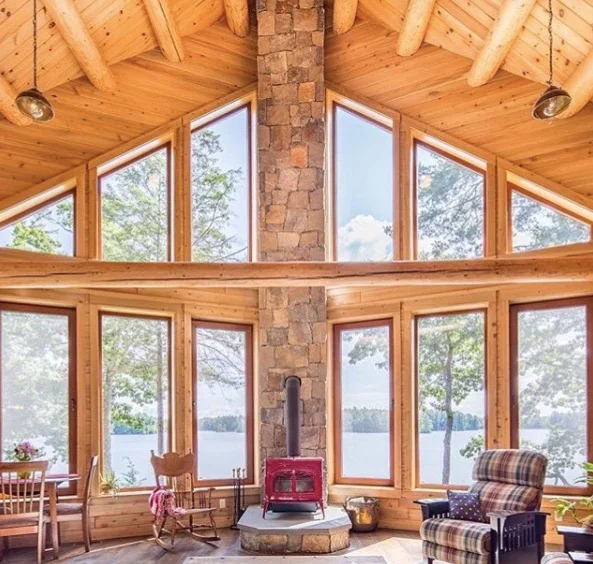A U.S. Log & Timber home is a versatile structure -- a place where contemporary decor looks as much "at home" as colonial furniture. On a rustic, wooded lot, a U.S. Log & Timber home is a “green statement.” A U.S. Log & Timber home would make a welcome addition to any city or suburban neighborhood, too, blending in well with all styles of residences.
Design wise, U.S. Log & Timber homes are the very picture of adaptability. You'll find models that incorporate many desirable features such as cathedral ceilings, balconies, lofts, dormers, porches and fireplaces. And whether you like single-level living or prefer a two-story structure, U.S. Log & Timber has models to suit your style from capes to chalets to ranches to gambrels. Many have full basements, providing for more-than-adequate storage space. Most are also available with family rooms, separate or attached garages, and some with breezeways.
Floor plans can be changed around to suit your needs—walls can be eliminated to create a more spacious effect, rooms reversed in position, extensions added, etc. The design of our log homes is such that you can finish the interior as your family grows, completing it as your needs mandate—and your budget allows. Inside and out, U.S. Log & Timber has designs on homes that are nothing short of beautiful.


